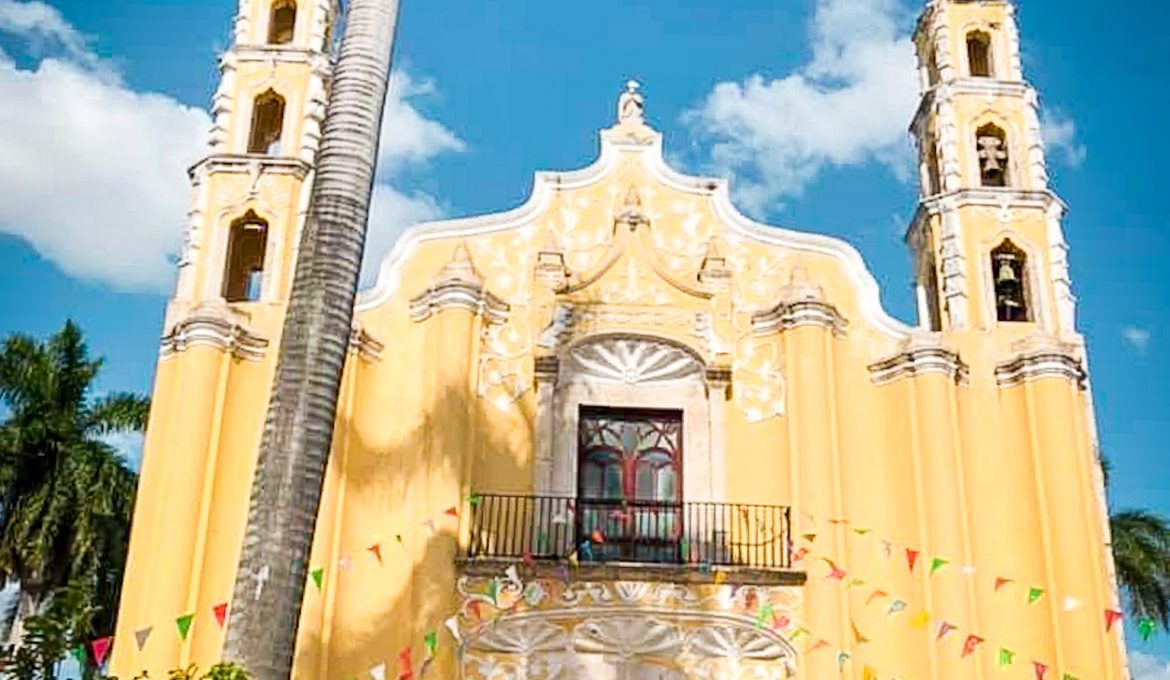
Many blogs about travel feature fascinating stories of people who have traveled to different countries and explored the world. These blogs offer valuable tips and advice on how you can travel and save money. Some of these bloggers have a business background, while others travel. No matter what kind of lifestyle they have, there's a few things you should keep in mind when starting your own blog.
First, bloggers must be passionately involved in the area they're writing about. It is crucial that you take the time and visit the place where you will be writing about. Asking people to read your blog is the best method to gauge if they're interested in what I have to say. Most readers will provide lots of feedback on your blog, even though they may not respond.
A self-hosted web site setup is a second requirement. This gives you full control over the site. You can have your own domain and your own server, for example. Bloggers often have contact information listed on their "About” page so that you can reach them directly. It is a good idea to travel to the places you intend to write about before you decide to start a blog. You can then use the information you have gained to make a better blog.

Third, the amount of time that a blog is in existence is a good indicator how familiar the blogger has become with his orher followers. The connection between readers and blogs that have been around for a while is stronger. If the reader knows the writer's lifestyle, then the relationship is more likely to be a co-orientation.
Fourth, blogs about travel can be a great source of inspiration. In particular, blogs about couples can be a good source of motivation for other couples who want to travel together. There are thousands of couples who have taken this path and whose blogs inspire other travellers.
Fifth, there are blogs about travelers who have lived in a very unconventional way. One couple flew hot air balloons over Turkey after visiting the Great Pyramids of Egypt. They have also traveled to forty countries over the course of the last four year. Another couple started their adventure as they were growing up and moved away from home.
Blogs about travel can also be a great source of information about your family history. It's possible to find out what your grandparents and parents did in their lifetime. If you are the type of person who loves to learn where your family came from, you can blog about your travels.

Researchers looked at background information and reader reactions when researching the relationship between bloggers, readers, and their readers. A Likert scale was used by readers to give ratings for their comments. Many of these comments were extremely positive. The average reader rated their comments from one to five. Readers who felt passionately about a comment were less likely to offer analysis or insights.
FAQ
Where do digital nomads eat most often?
A digital nomad can be defined as someone who travels without permanent ties for business or pleasure. This term was first used by Tim Ferriss (American author), in 1999 after Ferriss moved to Thailand. He called himself an "anti-corporate crusader."
Digital nomads now exist more than ever. According to Nomadic Matt, there are currently 11 million active digital nomads worldwide.
Travelling costs an average of $1,000-$2,500 per month. This is why most digital nomads stay away from expensive cities such as New York City, Los Angeles, and San Francisco. They travel where cheap food is available.
Digital nomads are known to eat out at any place, including cafes and restaurants. In fact, according to Nomadic Matt, the best place to meet them is in coffee shops because they spend a lot of time sitting and talking.
The key to finding these places is to ask locals. Look online for reviews and photos if you don't speak the language. Ask fellow travelers how much they paid for their meals. You can then choose a similar restaurant to yours. Take for example: If you are paying $10 for lunch in Paris then find something that is similar in Rome.
These apps, such as Yelp and TripAdvisor, are another great way of finding these places. Google Maps allows you to search for specific locations.
Are digital nomads making a lot of cash?
Digital nomadism can be a fascinating trend. A lifestyle where you travel for months at a time. Some people believe this could be the future work environment. Others say it's a fad. But whatever side you fall on, there is one thing we can agree on; it's certainly made its mark.
The number of people working remotely has increased dramatically since 2008. FlexJobs found that remote workers outnumber traditional office-based employees.
How much do digital nomads make? It depends on your job, the country you live in and whether or not it's self-employed.
Nomadic Matt says he earns between $10-$20k per month. However, this figure includes his income from blogging as well as speaking engagements and consulting gigs. These jobs don't pay the bills because they are too hard work. He mentions that about 80% is spent traveling.
But, Thailand is a country where you can make more than Americans. Expatistan reports that the average monthly salary in Thailand is USD 4,000. This is almost double what the median US income.
Apart from earning more, you will also enjoy lower taxes as well as lower housing costs. It's worth looking into if you have ever considered moving abroad.
Which jobs do digital nomads usually do?
A digital nomad travels between cities to find work. They travel with their suitcases to get work. Their lifestyle allows them to be flexible in how they work and when. Digital nomads have the ability to work remotely anywhere in the globe, even on remote islands, forests or mountains.
These are the most commonly used types of work: writing, graphic design and web development, software engineers, data entry, translation, customer service, social media management and data entry.
Digital nomads are those who travel and work remotely. This allows them to travel more easily and save on living expenses. Many digital nomads travel solo. Some others find it easier connect with local communities as they aren’t tied to any specific place.
Which countries are most loved by digital nomads
Nomadic Matt says India has the largest number of digital nomads. It is home to more than 1.5million people.
It isn't surprising, however, that this country offers the best internet connection in the entire world. WhatsApp makes it simple to communicate with loved ones and friends.
Nomadic Mat says that Australia, Canada France Germany Spain Italy Spain the UK and Switzerland are other top destinations. These countries offer great accommodation, excellent weather, and a high level of quality life.
These five countries are ideal for anyone who wants to relocate abroad.
-
Argentina - It is safe and cheap.
-
Chile - It's safe and beautiful.
-
Costa Rica is safe, friendly and affordable.
-
Ecuador – It's safe.
-
Mexico - It's affordable, safe, and near the US border.
How much does it take to become a digital nomadic? And how long do you need to travel before you can call yourself one?
There are many definitions of digital nomadism. Many people consider "digital nomadic" a general term that covers freelancers entrepreneurs, independent contractors and travelers.
Some people use this term to describe those who travel to work online for a job and stay there anywhere from 6 months to 2 year. You should be doing something online if you want to be considered digital nomad. It's not enough to just travel somewhere else.
Some digital nomads have enough income that they can live on their own and not need to look for work. Others make less than $10,000 a year.
Nomad List reports that the average digital nomad's monthly salary is $3,500.
In addition, there's no set amount of time required to be classified as a digital nomad. Most people think that if you're traveling for work, you've already crossed over into this category. But even if you only work part-time, you could still qualify.
NomadList actually shows that the average digital nomad's stay is between 3 and 6 months. That means you'll probably need to travel at least twice during that period.
Digital nomads often work remotely, which helps them save money on rent. Plus, they get to avoid commuting costs.
You can see why it may not be possible for everyone become a digital nomad. It takes planning and discipline. You will need to be able to spend a lot of your time.
These are some of the things you need to know if your goal is to be a digital nomad.
-
How much time are you willing to spend on your job?
-
What kind of work will you be doing?
-
Where will your headquarters be?
-
Are you going to need to move often?
-
Are you looking for savings?
-
Are you willing and able to sacrifice certain aspects (such relationships) of your life?
-
Are you able and able to quit your current job.
-
Are you imagining what you would like to do with your life after work?
-
Are you resigned to not jumping?
-
Are there any questions you might have about being a digital nomadic?
-
What would you describe as your life?
-
Would you recommend this book to anyone else?
-
Do you have any tips for digital nomads who are just starting out?
-
Would you recommend any advice to someone who is considering becoming a digital nomad.
Where do digital nomads typically stay?
Digital nomad destinations are most popular in Southeast Asia and the Caribbean. But you don't have to leave your house to live for several months.
The best place to be a digital nomad? Wherever they feel the most fulfilled. This may mean somewhere warm and tropical or anywhere else on Earth where they can find inspiration.
Although digital nomads are attracted to these locations by the great weather, they stay longer if there is rent available.
Digital nomads travel light but spend more time outdoors than anyone else. When they pick a destination to visit, it is important that it has plenty of outdoor activities.
These include hiking, surfing, kayaking, skiing, diving, sailing, fishing, mountain biking, horse riding, and even yoga.
They are also drawn to cities, and will happily relocate to any city with access to nature.
Living in a suitcase is not an option. It is essential to locate a spot where there is wifi. Avoid areas where the mobile signal is not reliable.
These challenges can be avoided by looking for a hostel. These hostels often offer internet access, and sometimes accommodation.
Hostels are ideal for digital nomads who like to travel light and keep their costs down. You can also meet new people in these social settings.
Many hostels offer communal kitchens and shared spaces for guests to meet up. There are also laundry facilities, bike rental, tours, and many other opportunities to explore the area.
What does a typical day look like for a digital nomad?
A digital nomad's day can vary depending on where they live. It could include the following:
-
Set up new logins and accounts
-
Content creation (blogs, article)
-
Researching new markets
-
Make new connections
-
New opportunities
-
Negotiating contracts
-
Working on projects
To be a digital Nomad, you have to learn how manage multiple aspects of life.
You need to set a time and schedule that is flexible enough to allow you finish your tasks and still have fun.
Maybe you have a morning routine where you check email, schedule meetings, and answer emails. You then take some time to relax after you have finished lunch.
After dinner, you start your evening routine. This involves reading blogs, checking social networks, and writing blog posts. The rest of the night is yours alone.
This will allow you to feel less overwhelmed and maximize your productivity throughout the day.
Statistics
- Surprisingly, according to the online quote, our 60-year-old will pay the same cost for both packages for three months in Finland. (travelinglifestyle.net)
- LifeStraw makes ones that remove 99.9% of bacteria and parasites, keeping you safe as you travel the world. (nomadicmatt.com)
- Being a nomadic entrepreneur means living life 100% on your terms. (worldpackers.com)
- In general, you can expect to pay around 5 to 10 percent of the total cost of your trip for travel insurance. (travelinglifestyle.net)
- After the deductible is paid for the year, the coverage is 100 percent. (travelinglifestyle.net)
External Links
How To
How to get free WiFi around the world
You won't find free WiFi everywhere, but plenty of hotspots are available. These are some locations where you can get free internet access:
-
Starbucks offers WiFi at all its locations. Simply look for the sign that says "Wi-Fi", located next to the cash register.
-
Many airports have Wi-Fi available at no charge. Many airports also provide charging stations for laptops.
-
Some hotels offer WiFi for free. Check for signs near the reception to advertise their free Wi-Fi.
-
Many public libraries offer free Internet access. Access is free if you have a library card.
-
Many restaurants now offer Wi-Fi for free. You can ask for the password upon your arrival.
-
Wi-Fi can often be found on trains. Google Maps allows you to enter the name and click on search.
-
Many universities offer wireless connections at no cost. Look out for the icon labeled "Wireless" on the network icons.
-
Though it might not be obvious that zoos provide free Internet access to their visitors, many do. Look out for the logo that indicates Wi-Fi.
-
Most museums offer Wi-Fi free of charge to visitors. You will find an information kiosk or booth outside the museum's entrance.
-
Many trade shows and conventions offer Wi-Fi at no cost, especially during non-peak hours. Find signs advertising Wi Fi availability at the event.
-
Free Internet access is offered by churches to members. Look for a notice posted somewhere inside the church.
-
Sometimes gas stations offer Wi Fi at no charge to customers. Near the pumps, look for the sign that says "Free Wi-Fi".
Here are five ways to get connected.
-
Avoid public areas. Public Wi-Fi networks are usually password-protected and require payment. If you need to connect, search for a private Wi-Fi network.
-
Use a VPN app. VPNs protect internet traffic and let users access their favorite websites without worrying about being tracked. Because they hide your location, VPNs are particularly useful for connecting to public hotspots.
-
You should look for unsecure connections. Anyone can join unsecured networks. Unsecured networks are more difficult to join than secured networks. But, they're not as secure than encrypted networks.
-
Join a community. Some communities offer free Internet access at local coffee shops, libraries, hotels, and other venues.
-
Bring your own device. To avoid roaming charges, most airports offer free WIFI.